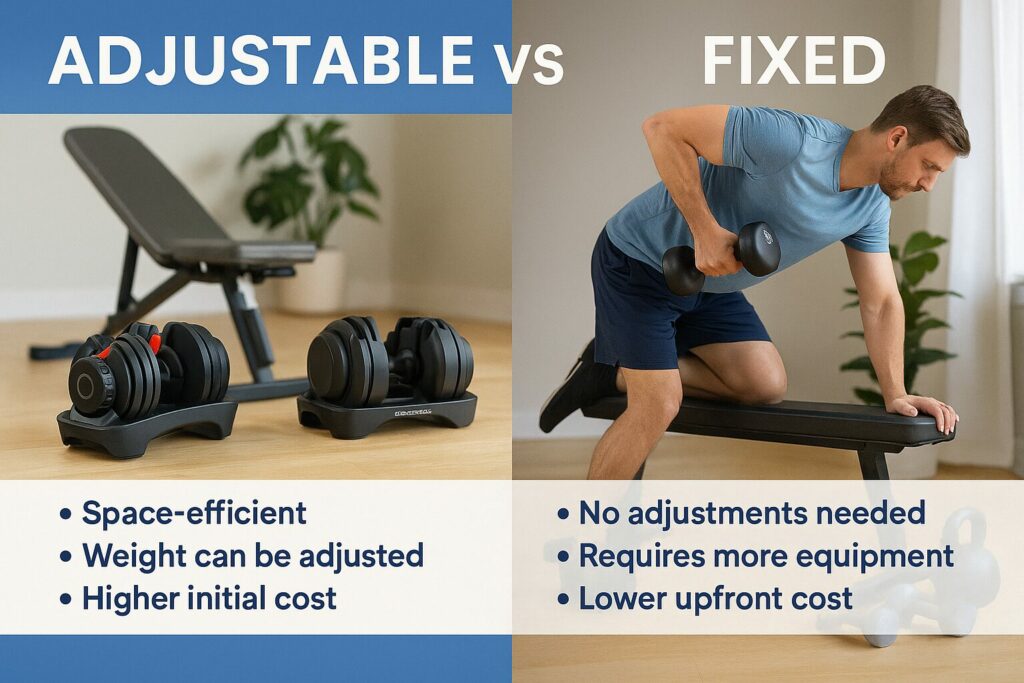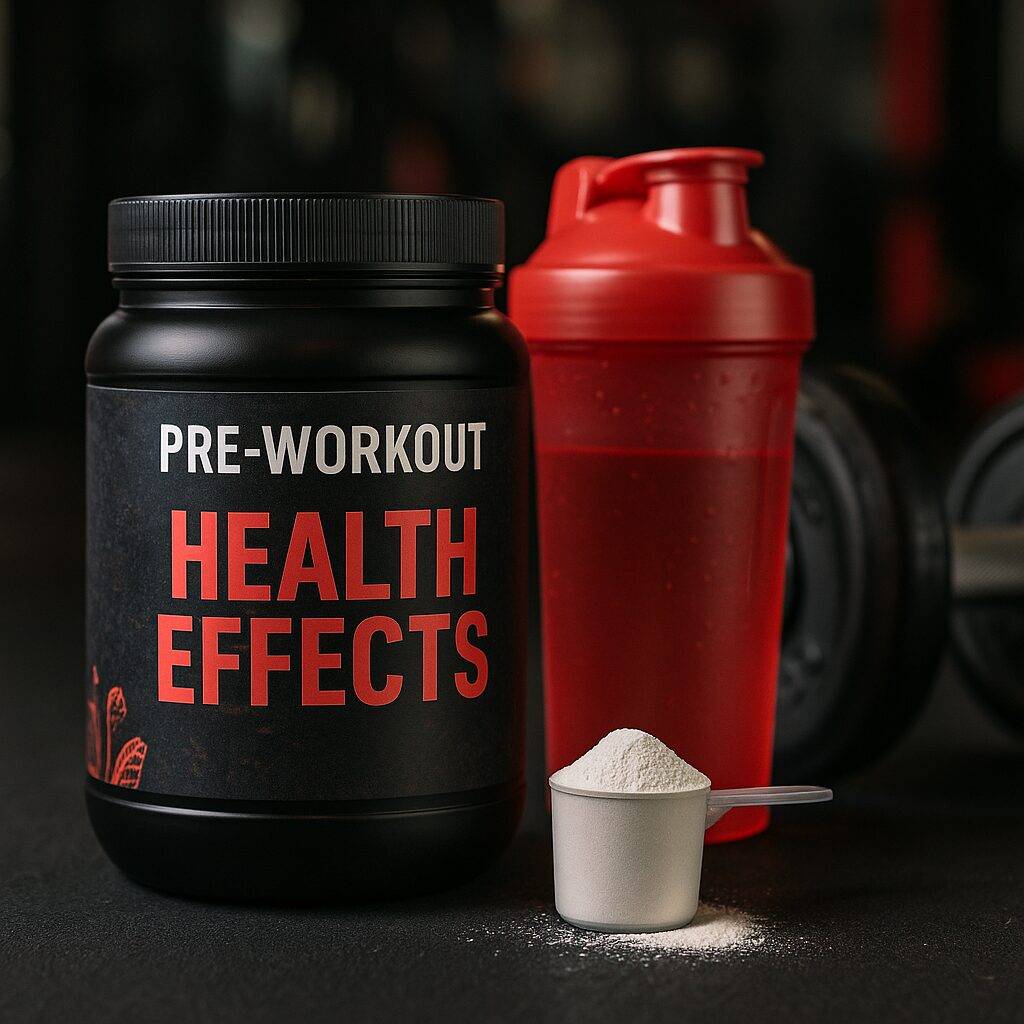When starting a strength training journey, many people wonder: “Should I choose adjustable or fixed weights?” In this guide, we compare adjustable vs fixed weights to help you decide which is the smarter option based on space, budget, and progress goals.

Table of Contents
Toggle1. Adjustable vs Fixed Weights: Beginner-Friendly Comparison Table
| Feature | Adjustable Weights | Fixed Weights |
|---|---|---|
| Space Required | Minimal – one set replaces many | High – multiple dumbbells needed |
| Cost | Higher upfront, lower long-term | Lower upfront, cost increases per weight |
| Ease of Use | Needs setup or adjustment | Ready-to-use instantly |
| Progression | Easy to scale with dial changes | Requires buying additional weights |
| Durability | Delicate mechanisms may wear | Built to last, gym-quality |
| Best For | Home gyms, progressive training | Simple routines, fixed strength levels |
2. Why Beginners Should Consider Adjustable Weights
Adjustable weights let you change the load easily by turning a dial or switching plates. These tools are ideal for beginners who want to save space and progressively increase their strength. For instance, our Adjustable Dial Dumbbell Set replaces multiple dumbbells in one compact unit, making it both cost-effective and convenient.
2.1 Benefits of Adjustable Weights for Home Strength Training
- They are space-saving and versatile, especially in tight spaces.
- Long-term budget-friendly investment when compared to multiple sets.
- Ideal for achieving progressive overload without clutter.
2.2 Drawbacks of Adjustable Weights
- Their bulkier feel may affect comfort during some movements.
- In some cases, they require occasional maintenance or calibration.
3. Why Beginners May Prefer Fixed Weights
Fixed weights include single-weight dumbbells or kettlebells, offering simplicity for beginners. They’re perfect for grab-and-go routines and consistent resistance levels. For example, many new lifters enjoy using our 10 lb Vinyl-Coated Kettlebell to build confidence while practicing form.
3.1 Advantages of Fixed Weights for Strength Training
- Simple to use and extremely beginner-friendly.
- Offer a more natural grip and traditional weight feel.
- Highly durable and require little to no maintenance.
3.2 Disadvantages of Fixed Weights
- Take up considerably more room over time.
- Can be costly as your strength improves and needs grow.
4. Making the Right Choice for Beginner Home Workouts
If you’re comparing adjustable vs fixed weights as a beginner, the best option depends on your goals and constraints. When space and scalability matter most, adjustable weights are a smart choice. However, if simplicity and convenience appeal to you, fixed weights are equally effective for starting out.
💡 Tip: Try combining a few fixed dumbbells with an adjustable set later. This allows for greater workout variety while keeping your setup compact.
💪 Ready to begin? Visit our Strength Training Equipment for Beginners to build your personalized setup today.
5. Frequently Asked Questions About Weight Types
5.1 Are adjustable weights safe for beginners?
Absolutely. Adjustable weights are safe as long as you use proper technique and ensure settings are securely locked.
5.2 Can I use both adjustable and fixed weights in my home gym?
Yes, using both offers flexibility and variety. Many home gym users alternate between the two depending on the exercise.
5.3 How much weight should beginners start with?
Beginners should start with 8–15 lbs. Typically, women begin at 5–12 lbs, and men at 10–20 lbs, depending on their fitness level.
6. Want to Try Pre-Workouts That Actually Work?
Boost your strength sessions with added focus and energy. Pre-workouts can enhance performance, especially during challenging routines.
See Our Top Pre-Workout Picks for 2025 →
🔗 Related Guides
- How to Build a Strength Training Routine at Home
- Strength Training Myths That Keep Beginners From Starting
- Healthline: Is Coffee a Good Pre-Workout?
Disclosure: As an Amazon Associate, HealthFitHub earns from qualifying purchases.








